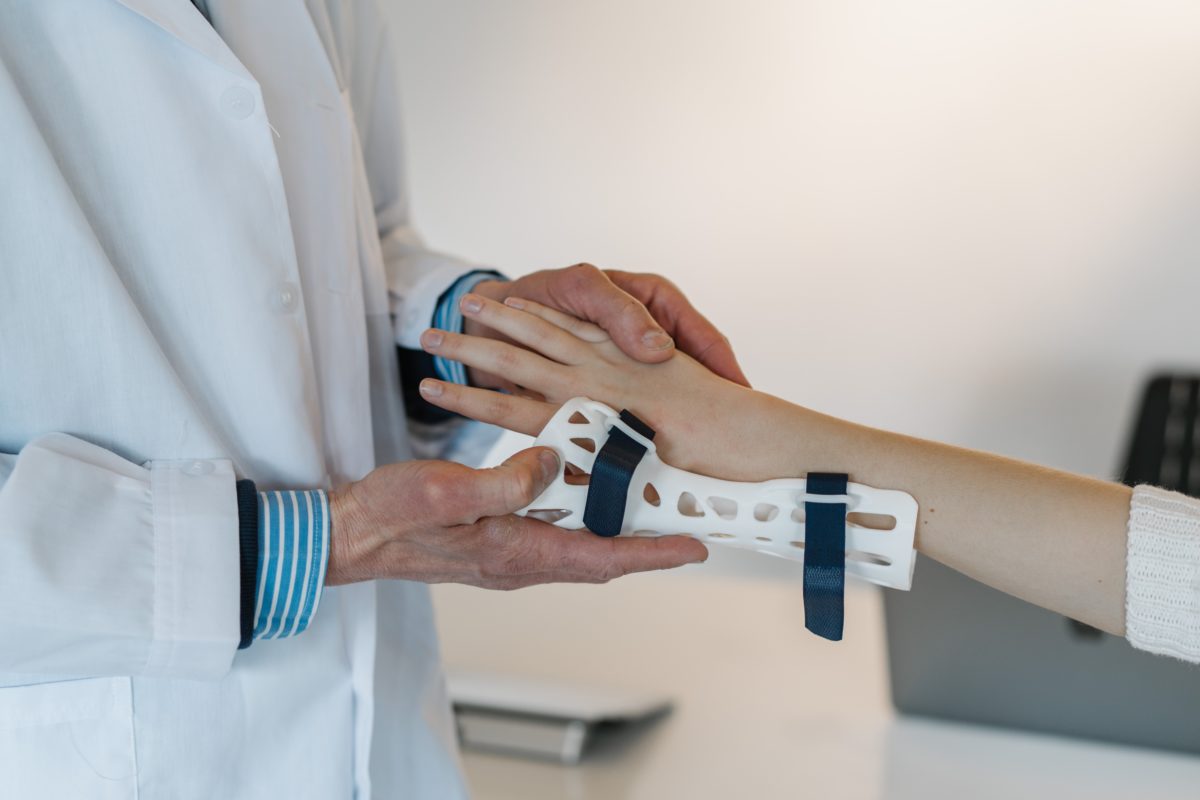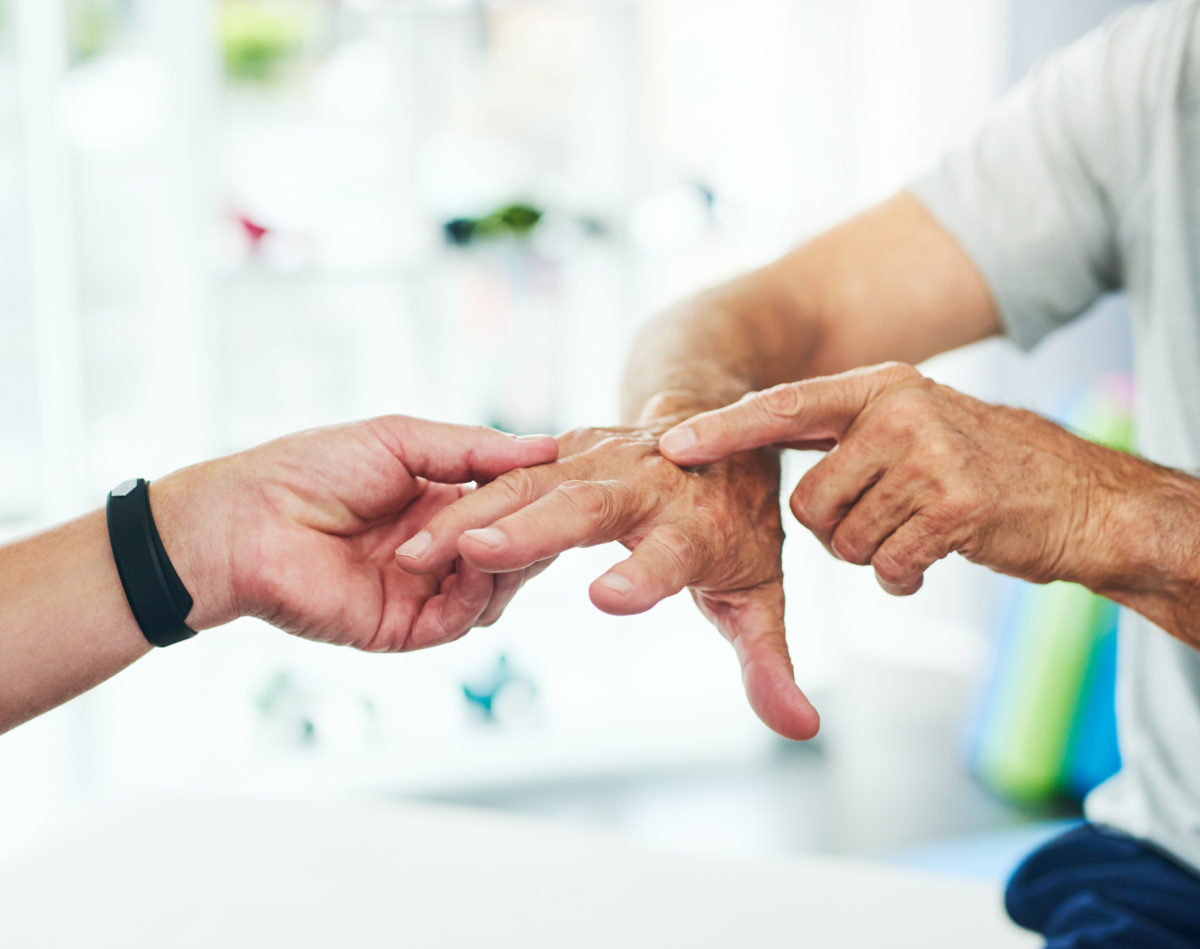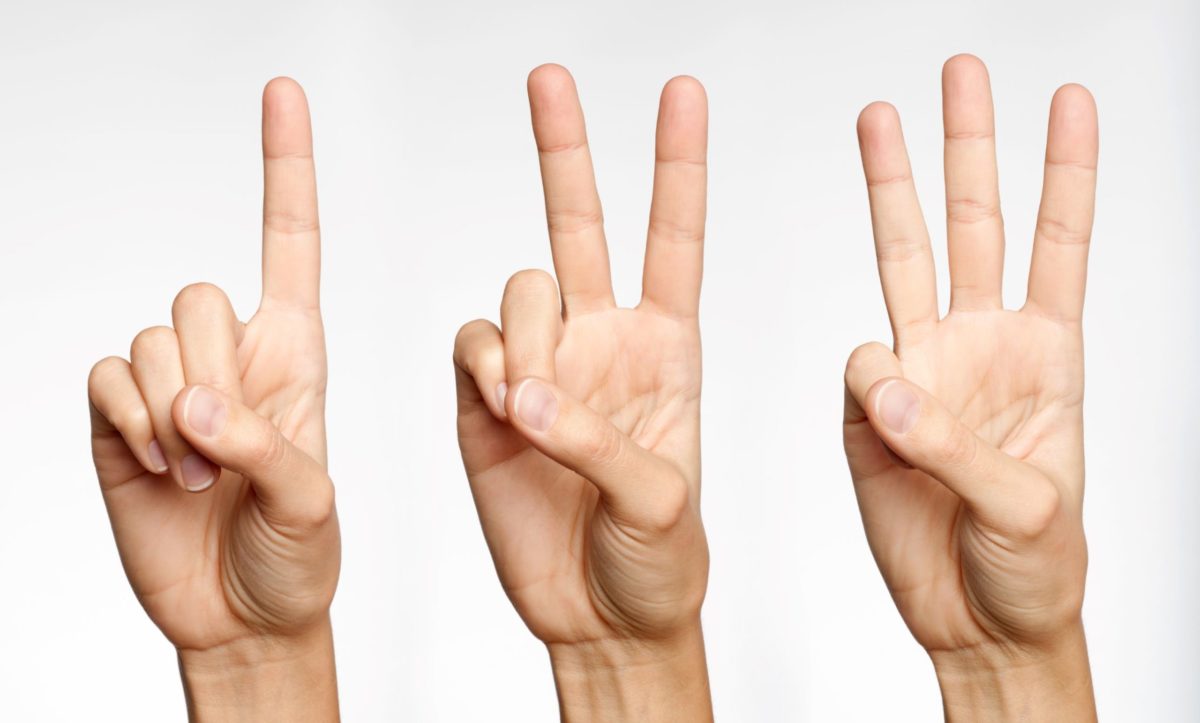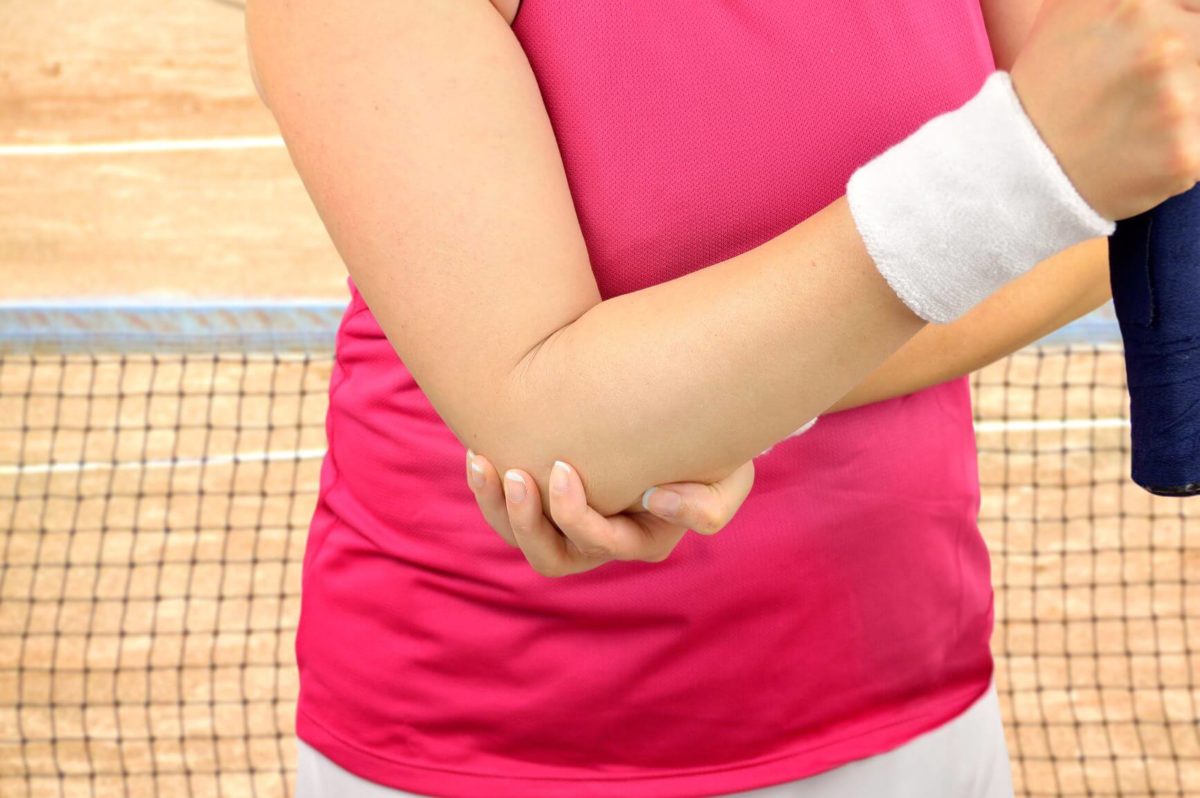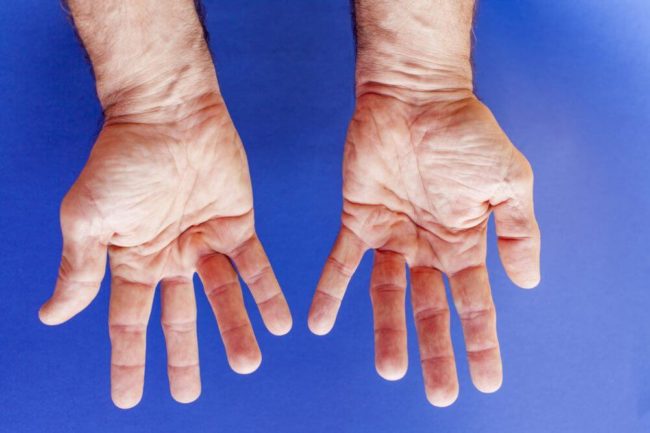Dupuytren’s contracture is a disease of the hand resulting in a deformity of the finger. It may have originated with the Vikings in Scandinavia and spread across Europe and then the world, as Viking influence spread. Whatever its origins, it can be a disabling and distressing condition.
If you have the symptoms or have had a diagnosis of Dupuytren’s contracture you may be wondering if it is curable. Read on to learn more about the condition and the answer to your question.
What is Dupuytren’s Contracture?
The condition, Dupuytren’s contracture, affects the fingers and hands. One, or sometimes more, fingers bend towards the palm of the hand. It can affect either or both hands and, in some cases, it can affect the thumb.
It usually starts when a nodule or hard lump forms under the skin of the hand. This small lump can be around a quarter of an inch in diameter. It can feel tender although this usually passes.
More nodules may develop. These nodules are benign (non-cancerous) and generally do not pose a problem at this stage. Over time the nodules can form an extended cord that runs along a finger or the thumb.
The cord can tighten or shorten bending the finger or thumb. The contraction pulls the finger or thumb towards the palm. Although this is generally painless it is progressive.
As the Dupuytren’s contracture gets worse the finger or thumb bends ever more towards the palm and into a permanently bent position. This can make using the hand difficult, especially when extending the hand. Playing a musical instrument, swimming or even shaking someone’s hand can be problematic.
What Are the Causes?
Other than the genetic background to Dupuytren’s contracture, we know little about the causes. It does often run in families. If you have the gene for Dupuytren’s contracture there are some factors that make it more likely.
It tends to affect older men, over 50 years of age. People with diabetes, epilepsy or who drink heavily or smoke have an increased chance of developing the condition. However, lots of people with the condition don’t have these problems.
Who Is at Risk?
The condition is quite common and although most cases are men over 50, women are also affected and there have been cases of children with the condition. It is more common in people with a northern European ancestry.
Because there is a genetic aspect to the disease it may not be preventable but avoiding some of the risk factors such as heavy drinking and smoking may reduce the risk.
Getting a Diagnosis
The key symptoms are:
- Nodules in the palm of the hand
- Lumps or pitted skin surface
- Thick skin
- Fingers bent towards the palm
If you have any of the symptoms described here, the first step is to have your hand examined by a physician. An examination will include a discussion with you about your symptoms and how they affect your life. Different people find that daily activities are more or less affected by the condition.
If the diagnosis is Dupuytren’s Contracture, the physician will assess the severity. In many mild cases, the physician will recommend no treatment until the severity gets worse. In other cases where the condition is more advanced, there is a range of possible treatments.
What Are the Treatments?
Following a diagnosis, your physician may suggest non-surgical treatment or a minor procedure called needle fasciotomy. Surgery is the recommendation in severe cases. Surgery options include open fasciotomy or fasciectomy.
Non-Surgical Treatment
Non-surgical treatments include radiation therapy or an injection of collagenase clostridium histolyticum.
Radiation Therapy
Radiation therapy may delay or prevent the advancement of the condition and so avoid surgery.
The treatment is believed to reduce the production of collagen and therefore the development of the cords. The treatment does not lead to a reduction of symptoms in all cases. There are also some minor side effects including dry and flaking skin.
Collagenase Clostridium Histolyticum
Xiaflex or collagenase clostridium histolyticum is an enzyme. An injection into the cords in the hand weakens the cord. Follow up treatment involves physically extending the range of movement of the finger.
Your physician will advise on the exact post injection procedures. It’s important to follow these precisely. Further injections may be administered.
Some side effects may be swelling, itching and some bruising and pain. Less common side effects include feelings of sickness or dizziness.
The benefits of collagenase clostridium histolyticum may be to increase movement of the fingers and delay or avoid the need for surgery.
Surgical Treatments
There are several surgical options your physician may consider.
Needle Fasciotomy
This procedure does not need an overnight hospital stay. A local anesthetic means the patient remains conscious throughout.
During the procedure, the surgeon inserts a needle or fine blade into the problem fibrous cord. This weakens the cord and reduces the tendency to pull the finger towards the palm.
The benefits of this procedure are:
- Less impact than major surgery
- Quick recovery
- Less risk of complications
- Improved use of fingers
The treatment has some effect but many people will experience a return of the contracture.
Open Fasciotomy
More serious cases need more invasive surgery. The aim is to have a long-term benefit but as with any surgery, there are risks, as well as potential benefits.
The operation can be under a local anesthetic and does not usually require admission to hospital. After the surgeon makes an incision in the hand, they cut the fibrous cord, weakening it. This allows straightening of the fingers.
The wound in the hand is then stitched and dressed. There will be some post-operative care required including removal of the stitches. The healing process takes longer than a needle fasciotomy and there will be some scaring.
Fasciectomy
This procedure is the most invasive of the options available. There are three types of fasciectomy.
During a regional fasciectomy the surgeon removes the affected tissue through a large incision. This is either using a local anesthetic which numbs the whole arm or alternatively under a general anesthetic. This means the patient is unconscious during the operation.
This type of surgery is the most common type used. It is a more invasive operation than an open fasciotomy and so it comes with a higher risk of complications.
A segmental fasciectomy is where the surgeon makes small cuts in the hand and removes small pieces of affected tissue. A dermofasciectomy is where the skin is also removed along with the affected fibrous cord. A skin graft, taken from another part of the body, covers the wound.
The effectiveness of fasciectomy is greater than other procedures with longer lasting results. There are lower rates of the Dupuytren’s Contracture returning than for non-surgical or other surgical procedures. A physician will discuss the risks of surgery with you prior to making a decision to operate.
Recovery
Recovery after treatment can take some time. After surgery, you may need physiotherapy to improve the range of movement. This can take the form of manipulation and exercises.
The fingers may be bandaged to a plastic strip for all or part of the day and night. This splinting may help the position of the fingers as well as the formation of scar tissue.
After recovery from surgery, there is a chance that the process that causes Dupuytren’s contracture will continue. This means that the condition could return.
A return of the condition is most likely with needle fasciotomy and least likely with fasciectomy.
Can Dupuytren’s Contracture Be Cured?
As Dupuytren’s contracture is probably caused by a genetic pre-condition there is no simple cure. The treatments described here have different degrees of success and for different time spans. This depends on the degree of advancement and severity of the condition.
All individuals have different experiences of how debilitating the condition is and how beneficial any improvement is. Different people respond to treatment differently and also vary in their recovery and experience of complications.
Research indicates that while there is no cure for Dupuytren’s disease it is possible to achieve a beneficial outcome following treatment. A reduction in inconvenient and uncomfortable symptoms is desirable for most people. Slowing down the progression of the condition is also very welcome.
What Should You Do If You Have Symptoms?
Dupuytren’s contracture can interfere with your ability to do everyday tasks such as driving, washing or dressing. It can impact work if it makes using a keyboard or tools difficult. It can have a social impact if it stops you shaking hands comfortably.
There may not be a complete cure but there is a range of treatments that you can discuss with a physician. Understanding your condition and getting a professional diagnosis is key.
To talk to someone about your symptoms, call or fill out our form.
Contact Us

